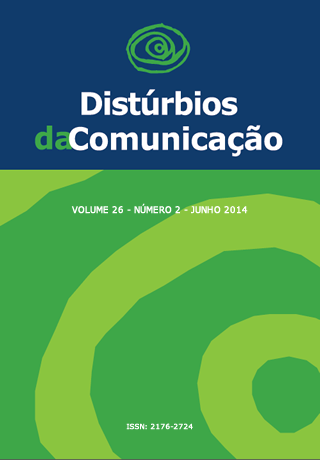Automated Auditory Brainstem Response of 30 dBnHL
Keywords:
evoked potentials, auditory, neonatal screening, infant, newborn, hearing testsAbstract
Introduction: The Automated Auditory Brainstem Response (AABR) is indicated for hearing screening of newborns with risk indicators for hearing loss and in cases of “fail” results in the Otoacoustic Emissions (OAE), even in those with lower risks. Currently, most AABR equipment use the intensities of 35 or 40 dBHL to evoke auditory responses. However, new methods of detection in the frequency domain have been developed to allow detection of mild hearing losses, at 30 dBHL. PURPOSE: To analyze the AABR results at 30 dBnHL intensity, regarding sensitivity, specificity, and time taken in the assessment. Methods: The AABR was carried out in 200 newborns between 24 and 48 hours of life. The analysis used the method of response detection in the frequency domain, using the q-sample test for statistical analysis. The ABR with click stimuli was used as golden standard. Results: Eleven newborns had “fail” results in the AABR, and nine of them were false-positive results. It was obtained sensitivity of 100%, and specificity of 97.23%. The mean time of assessment was 32.9±22.3 seconds. Conclusion: The AABR conducted in the frequency domain, which uses q-sample tests, with 30 dBHL of intensity, presents high sensitivity and specificity, with short response detection time.Downloads
Metrics
Downloads
Published
Issue
Section
License
Copyright (c) 2014 Taise Argolo Sena-Yoshinaga, Isabela Freixo Côrtes-Andrade, Mabel Gonçalves Almeida, Doris Ruthi Lewis

This work is licensed under a Creative Commons Attribution 4.0 International License.









